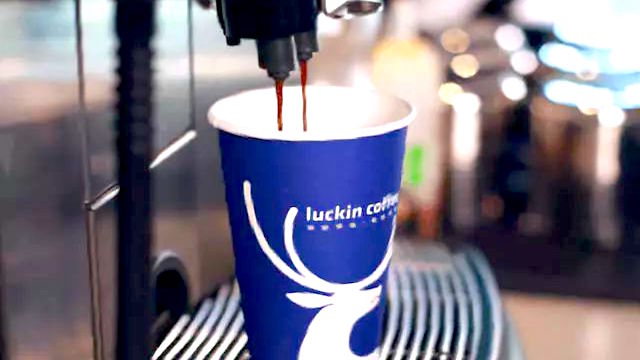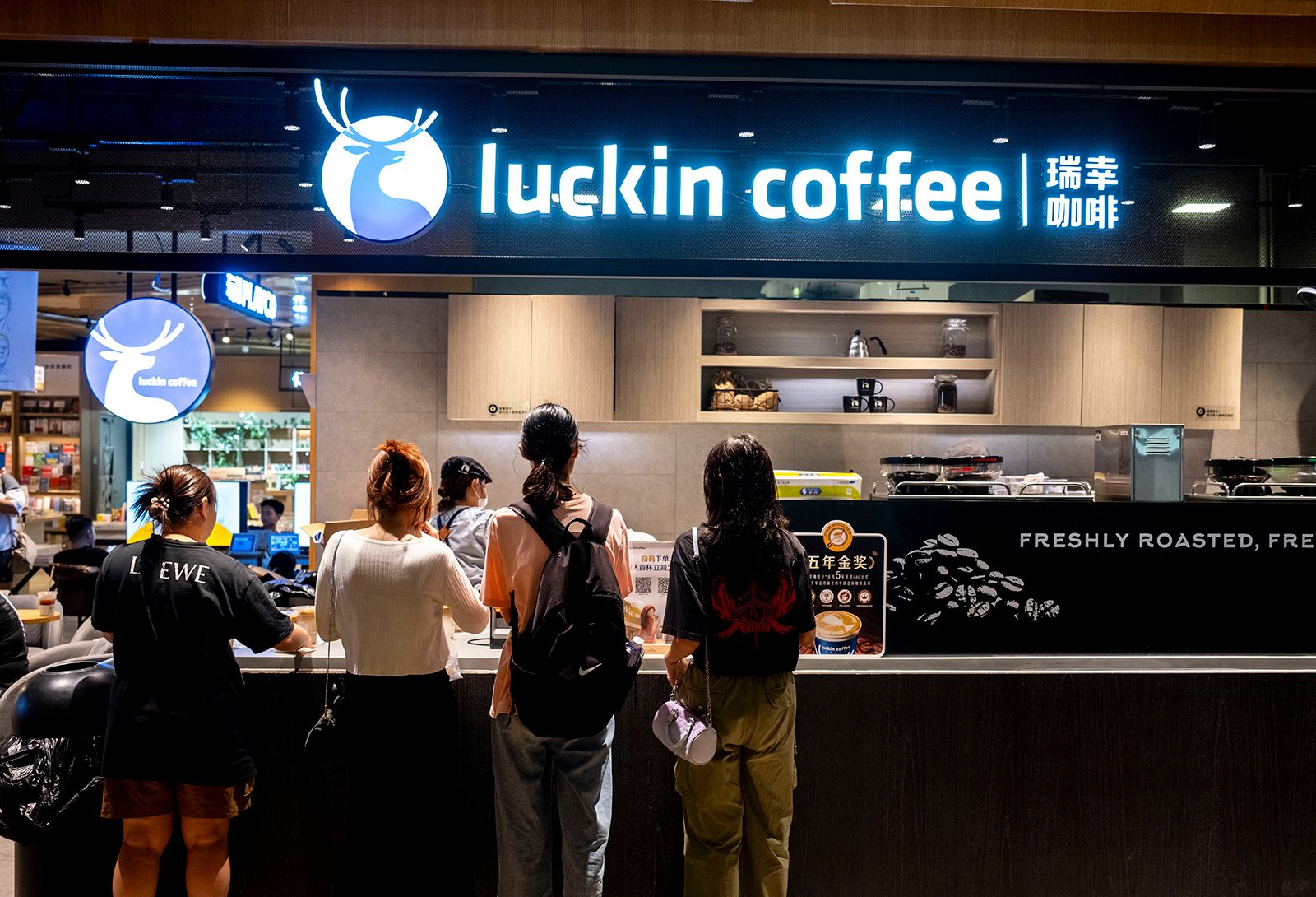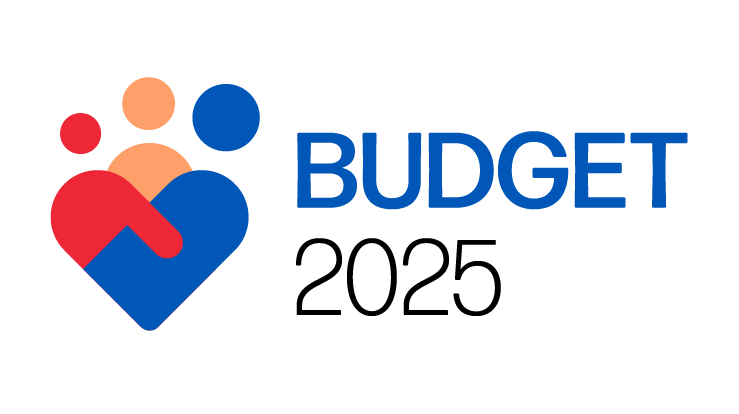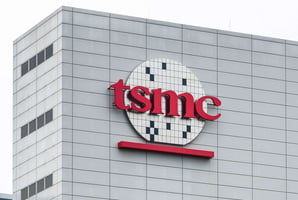Luckin Coffee's Bold Move: U.S. Entry with USD$2 Lattes to Rival Starbucks
Luckin Coffee, a name that has rapidly become synonymous with innovation in the coffee industry, is making headlines again. This time, the Chinese coffee giant is preparing to enter the U.S. market with an audacious strategy: offering lattes for just USD$2.
This bold move aims to challenge established players like Starbucks, which has long dominated the American coffee scene.
In this article, we will explore Luckin Coffee's background, its entry strategy, and the potential implications for both consumers and the coffee industry at large.

Luckin Coffee: The Chinese Coffee Phenomenon
Luckin Coffee was founded in 2017 and quickly became a significant player in China's coffee market. The company adopted a unique business model focused on convenience and technology.
By leveraging mobile app ordering and a network of small stores primarily designed for pickup and delivery, Luckin managed to open over 4,000 locations within just two years.
As of 2023, it boasts around 20,000 stores across China, significantly outpacing its competitors.
Several factors contributed to Luckin's success:
- Convenience: The app-based ordering system allows customers to place orders seamlessly.
- Affordability: Competitive pricing has attracted price-sensitive consumers.
- Innovation: The company continually adapts its menu and services to meet customer preferences.
However, Luckin's journey has not been without challenges. The company faced a significant scandal in 2020 involving inflated sales figures, leading to its delisting from the Nasdaq stock exchange.
Despite this setback, Luckin has rebounded remarkably, demonstrating resilience and adaptability.
The U.S. Coffee Market Landscape
The U.S. coffee market is vast and competitive, valued at approximately USD$54 billion as of 2023. Major players include Starbucks, Dunkin', and Peet's Coffee, each commanding significant market shares. Starbucks alone operates around 16,700 stores nationwide.
Consumer preferences in the U.S. have evolved over recent years:
- Specialty Coffee Demand: There is a growing trend towards specialty coffee drinks, with consumption increasing by 7.5% among American adults in 2024.
- Price Sensitivity: Many consumers are becoming more price-conscious due to rising living costs.
Starbucks typically prices its lattes around USD$4 to USD$5, making Luckin's USD$2 offering particularly appealing in this context.

Luckin's Entry Strategy: The $2 Latte Gambit
Luckin Coffee's entry into the U.S. market hinges on its USD$2 latte gambit. This pricing strategy aims to undercut established competitors significantly while appealing to budget-conscious consumers.
Breakdown of the $2 Latte Offering
- Quality Ingredients: Despite the low price point, Luckin emphasizes quality ingredients to maintain customer satisfaction.
- Technology Utilisation: Advanced technology allows for efficient operations, helping to keep costs down.
Comparison with Competitors' Pricing
| Brand | Average Latte Price |
|---|---|
| Starbucks | USD$4 - USD$5 |
| Dunkin' | USD$3 - USD$4 |
| Luckin Coffee | USD$2 |
This pricing strategy could reshape consumer expectations regarding coffee prices in America.
Challenges Facing Luckin in the U.S. Market
While Luckin's strategy is bold, it faces several challenges:
- Brand Recognition: Building trust with American consumers unfamiliar with the brand will be crucial.
- Taste Preferences: Adapting its offerings to suit local tastes may require significant adjustments.
- Regulatory Compliance: Navigating U.S. regulations can be complex for foreign companies.
- Operational Hurdles: Establishing a supply chain and operational framework in a new market poses logistical challenges.
Potential Disruption to the U.S. Coffee Industry
Luckin's entry could have significant implications for established chains like Starbucks:
- Competitive Pressure: If successful, Luckin could force competitors to rethink their pricing strategies.
- Consumer Behaviour Changes: A shift towards seeking affordable options may emerge among consumers.
- Impact on Smaller Cafés: Independent coffee shops could also feel the pressure as consumers flock to lower-priced alternatives.
Luckin's Technology-Driven Approach
Luckin Coffee has built its success on a technology-driven model that enhances customer experience:
- Mobile App Functionality: The app facilitates seamless ordering and payment processes.
- Data Analytics: Utilising data analytics helps tailor marketing efforts and manage inventory effectively.
- Cashless Transactions: Emphasising contactless payments aligns with modern consumer preferences.
This tech-savvy approach sets Luckin apart from many traditional coffee chains in the U.S., which may still rely heavily on conventional ordering methods.
Marketing and Expansion Strategy
Luckin plans a targeted marketing strategy focusing on demographics likely to embrace its offerings:
- Target Cities: Initial launches will focus on metropolitan areas with high concentrations of Chinese students and tourists, such as New York City.
- Brand Positioning: Marketing campaigns will highlight affordability without compromising quality.
- Partnerships: Collaborations with local businesses could enhance brand visibility and acceptance.

Financial Metrics from 2020 to 2024
Table 1. Key Financial Figures for Luckin Coffee Inc. (FY 2020 – FY 2024)
Here's the revised table with the SGD values placed side by side with the USD values:
| Fiscal Year | Revenue (USD$ / SGD) | Approx. YoY Revenue Growth | Total Assets (USD$ / SGD)* | Total Liabilities (USD$ / SGD)* |
|---|---|---|---|---|
| FY 2020 | USD$618 million / SGD 841.68 million | ~+41% (vs. FY 2019) | – | – |
| FY 2021 | USD$1.25 billion / SGD 1.70 billion | ~+102% (vs. FY 2020) | – | – |
| FY 2022 | USD$1.93 billion / SGD 2.62 billion | ~+54% (vs. FY 2021) | – | – |
| FY 2023 | USD$3.51 billion / SGD 4.77 billion | ~+82% (vs. FY 2022) | ≈USD$2.50 billion / ≈SGD 3.40 billion | ≈USD$1.17 billion / ≈SGD 1.59 billion |
| FY 2024* | Projected ~USD$5.8 billion / Projected ~SGD 7.89 billion | (Projected high growth) | ≈USD$2.73 billion / ≈SGD 3.71 billion | ≈USD$1.27 billion / ≈SGD 1.73 billion |
Notes:
- The SGD equivalents are calculated at the exchange rate of USD$1 = SGD1.36.
- For FY 2023 and FY 2024, balance‑sheet figures are taken from the December 31, 2023 and June 30, 2024 reports (converted at an approximate exchange rate of 7.3 RMB per USD$).
- FY 2020–FY 2022 data are based on estimates compiled by third‑party sources (e.g. Macrotrends).
Table 2. Selected Key Financial Ratios for Luckin Coffee Inc. (FY 2020 – FY 2024)
| Fiscal Year | P/E Ratio | P/B Ratio | EBITDA Margin | Current Ratio | Debt/Equity Ratio |
|---|---|---|---|---|---|
| FY 2020 | ~26.2 | ~5.15 | ~12%* | – | – |
| FY 2021 | ~94.4* | ~4.34 | (Data not consistently available) | – | – |
| FY 2022 | ~21.4 | ~7.97 | – | – | – |
| FY 2023 | ~26.2 | ~6.54 | ~15.3% (GAAP operating margin from Q3 data) | ~1.39 | ~0.48 |
| FY 2024* | ~26.2 (TTM) | ~4.31 (per recent reports) | ~15.3% (TTM) | ~1.36 | ~0.50 |
Notes on Table 2:
- The P/E ratios above (e.g. 26.2 for FY 2020, FY 2023, and TTM FY 2024) are approximate values derived from a mixture of historical filings and trailing‑twelve‑month estimates; the unusually high value in FY 2021 (≈94.4) reflects the turbulence during the restructuring period.
- P/B ratios vary over time as the company’s balance‑sheet “net assets” change; for example, several sources report a lower P/B in the most recent period (≈4.31 for FY 2024 TTM) compared to earlier years.
- EBITDA margins (taken here as a proxy for operating efficiency) are based on recent quarterly data (for example, Q3 FY 2023 reported a GAAP operating margin of approximately 15.3% for self‑operated stores).
- Current and debt/equity ratios are based on the latest balance‑sheet data available (for FY 2023 end‑of‑year and FY 2024 June reports).
- “–” indicates that comparable public data were not readily available for that period.
Note: These tables offer a quick overview of Luckin Coffee’s financial growth and valuation over the last five fiscal years.
Investors and analysts should review full annual and quarterly reports available on Luckin’s investor website for detailed insights.
The company's turnaround and rapid expansion have caused significant year-to-year volatility in many ratios. Note that FY 2024 figures are preliminary and subject to audit.
Always check the latest filings for the most accurate information before making decisions.
Financial Implications and Sustainability
Entering the U.S. market represents a substantial financial commitment for Luckin:
- Investment Needs: Significant initial investment will be required for store setups and marketing efforts.
- Profitability Timeline: Analysts project that it may take several years for Luckin to break even in the U.S., depending on market acceptance.
- Long-term Viability of Pricing Model: Sustaining low prices while ensuring profitability will be critical as competition intensifies.
Consumer Reception and Early Feedback
As news of Luckin's expansion spreads, initial reactions from potential U.S. consumers have been mixed but generally positive:
- Social Media Buzz: Conversations around affordability have generated considerable interest online.
- Expert Opinions: Industry analysts suggest that if executed well, Luckin could carve out a significant niche in the competitive landscape.
Comparisons with early consumer feedback from China highlight potential challenges but also opportunities for growth.
The Bigger Picture: Global Coffee Market Trends
Several broader trends are shaping the global coffee market:
- Affordable Luxury: Consumers increasingly seek high-quality products at reasonable prices.
- Technological Integration: Technology continues to redefine retail experiences across industries.
- Sustainability Concerns: Ethical sourcing practices are becoming more important as consumers demand transparency from brands.
These trends indicate that companies like Luckin must remain agile and responsive to evolving consumer expectations.
Potential Outcomes and Future Scenarios
The future holds various possibilities for Luckin’s venture into the U.S.:
- Best-case Scenario: Successful disruption of the market leads to rapid expansion and profitability.
- Worst-case Scenario: Failure to gain traction results in financial losses and potential withdrawal from the market.
- Middle Ground Scenario: Establishment of a loyal customer base allows for gradual growth without overwhelming competition.
Each scenario carries implications not just for Luckin but for the entire coffee industry landscape moving forward.
In a Nutshell
Luckin Coffee’s entry into the U.S. market represents a bold strategy that could reshape consumer expectations around coffee pricing and quality.
While challenges abound—ranging from brand recognition to operational hurdles—the potential rewards are significant.
As we watch this unfolding narrative, it is clear that consumers stand to benefit from increased competition in an already vibrant coffee culture.
Ultimately, whether through success or failure, Luckin’s journey will undoubtedly leave an indelible mark on the global coffee industry landscape.
Let us know what you think about this topic, and what do you want to hear next.
You can now be our community contributor and make a pitch to have your favourite personality be on our show.
Join our community group and drop us your insights on this topic.

-3.png?width=50&name=Square%20(2)-3.png)










Let us know what you think of this post